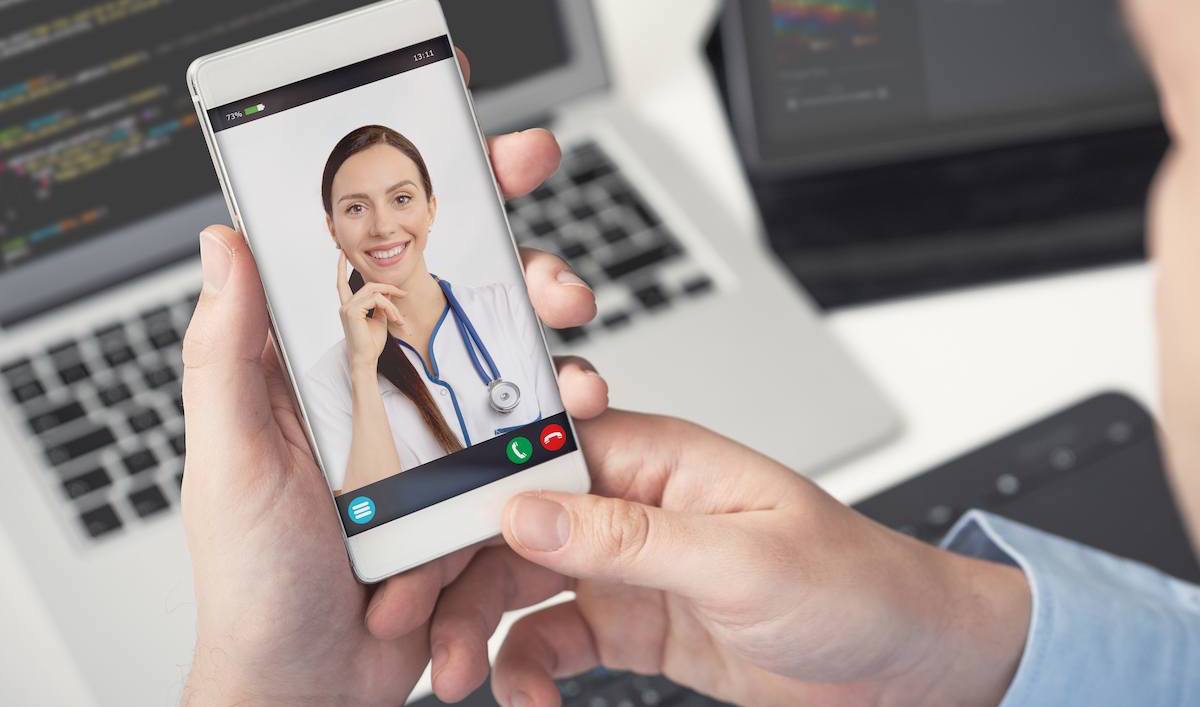Telemedicine has been around for some time, utilizing new technologies as they developed. As early as the 1920s, doctors were thinking about how they could use available tools to connect with patients, receive real-time health data, and share information with colleagues.
Nowadays, we enjoy a huge range of technological devices and applications that make telemedicine more accessible than ever. Reaching the doctor remotely is not a new idea, but as we advance in understanding of contagious diseases, the demand for telemedicine rises along with that knowledge.
A vast number of patients are currently navigating the learning curve to become comfortable with telemedicine. Following are four exciting ways that its use can help to fight diseases both now and long into the future.

Less Exposure to Contagion
It is well understand that disease spreads when people have close contact with other people, animals, or objects that have been infected. Human contact is necessary for our survival, so we’ll never be able to completely stop contagions without a vaccine and effective treatments developed over years of experience with the disease. But the more we can limit non-essential contact, the fewer opportunities the virus or bacteria will have to find new hosts.
Sometimes it is necessary to see your doctor in person, but when it’s not, avoiding the trip to a facility where sick people are treated is an excellent way to slow the spread of any contagious disease.
Reducing the number of in-person visitors to the office also makes it easier for medical staff to successfully implement heightened cleaning protocols and allows all visitors to maintain the recommended six feet of distance.
Easier Access
There are all sorts of challenges that can make it difficult to see a doctor. People in rural areas with limited options for healthcare may struggle with transportation to a clinic many miles away. Long wait times are another problem that can impact access in any community and make it challenging for people to be seen before their condition becomes dire.
Another struggle with accessing a doctor when you’re ill is the very fact that you’re ill! Whether you need to stay close to your bathroom or are simply experiencing major pain and exhaustion, getting up and dressed (let alone showered) can be very difficult.
If the reason for your visit is mental or emotional, such as depression or anxiety, leaving home at all can feel impossible. Reaching out via video chat is a much lower hurdle to overcome.
The upshot of easier access is that more people who need help will receive it. Diseases can be caught earlier and treated more successfully.
Better Monitoring of Ongoing Conditions
There are some limitations of telemedicine, especially that your doctor won’t be able to physically examine you. But telemedicine can be extremely helpful when you already have a primary diagnosis that requires regular monitoring.
You’ll be able to check in with your doctor, describe current symptoms, relay side effects experienced from your current treatment, and receive advice on necessary changes or next steps. After the appointment, your doctor can call in any medicine you need to the pharmacy.
But the potential for better monitoring of your condition via telemedicine doesn’t stop there. Certain medical devices and monitors can transmit health data directly to your doctor’s office. Other devices store data that the patient then submits. Both options can limit the number of physical trips made to the doctor’s office.
Ongoing Research
Scientists the world over are hard at work on projects that will help us better understand the diseases that affect humans. Questions surrounding a vaccine, effective treatment, risk factors for deadly progression of the disease, and the potential for protection via herd immunity are keeping the greatest minds on earth busy day in and day out.
Telemedicine is one way that all of that important work can continue even as the researchers themselves are geographically diverse. Not only does it connect experts throughout the world, it also allows for instant sharing of critical data from doctors and nurses on the front lines.
Telemedicine is currently being used to fight all kinds of illnesses by expanding access to research and development on diseases from cancer to diabetes.
There are issues to consider when utilizing telemedicine. Your insurance might not cover it, for example. Keeping the connection protected against hackers is another, as is access to stable internet. Of course, telemedicine is not appropriate for all types of doctor visit, either. Most diagnostic tests will need to be performed in person.
However, for ongoing care of an existing condition, referrals for specific testing, or simple diagnoses that can be made based on your symptoms and/or a visual inspection via webcam, telemedicine is an excellent tool that can fight disease without exposing you to additional bugs. It is also critical in the ongoing fight against disease, a fight that is waged globally every day by dedicated medical experts.
For all these reasons and more, now is an excellent time to embrace telemedicine.